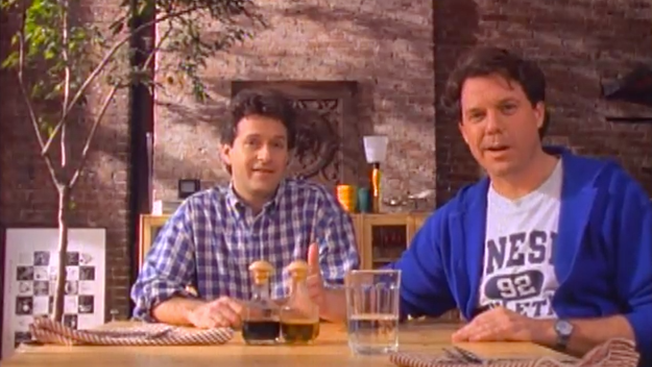20 Years Before It Was Cool to Cast Gay Couples, Ikea Made This Pioneering Ad
Posted in: Uncategorized
The mini-wave of brands casting gay couples in TV ads this year continues to rise, with the likes of Honey Maid, Cheerios, and DirecTV all diving in. More power to them. But Ikea was the first marketer to feature a gay couple in a mainstream commercial. Twenty years ago.
The 1994 spot below, from Deutsch, ran after 10 p.m. in three markets where Ikea then had a significant presence: New York, Philadelphia and Washington, D.C. The late-night airing ensured that the ad wouldn’t be seen during “family hour” programming. That concession, however, did little to quell the objections of the American Family Association and its leader, the Rev. Donald Wildmon.
Wildmon called for boycotts of Ikea stores, one of which, on Long Island, was the target of a bomb threat, which turned out to be unfounded. The retailer, however, continued to air the ad, which was part of a lifestyle campaign featuring different types of consumers (a divorced mom, adopting parents, empty nesters, etc.) that began in 1993.
The creative team behind “Dining Room,” including creative director Greg DiNoto, associate cd Kathy Delaney, copywriter Dallas Itzen and art director Patrick O’Neill, are no longer at Deutsch. But O’Neill, who later worked at TBWAChiatDay and now is chief creative officer at blood testing company Theranos, shared his memories of helping to create something that didn’t win awards but was truly groundbreaking.
brightcove.createExperiences();
AdFreak: Where did the idea for “Dining Room” come from?
Patrick O’Neill: We would base a lot of our stories on the real people we would see. We’d go to the New Jersey store—in Elizabeth—and because [the ads] were based on real people, we would watch, observe and see how people use the product, who they were, what kinds of things they were buying. And we’d figure which stores were the best ones. And there were a lot of gay couples there. We thought, Why don’t we do one? Donny [Deutsch] thought it was a great idea and felt like it was a true representation of Ikea’s values, which is they’re always accepting of everyone.
So, that store was like your focus group or idea center?
It was. And we figured out where life intersected with furniture. … You had to understand what was going on in the culture at that time, I thought, versus just doing [ads] in a sort of timeless manner. Divorcees still go there, that kid still gets adopted, and gay couples still go there, you know [laughs]. It just wasn’t a typical depiction in media.
What was the shoot like?
A lot of the grips and all the people that were working on the set—you could feel that there was a lot of tension in the air because it was so unusual to see.
Did you shoot it at the store?
Yes.
Who was the director?
Paul Goldman. He had just started directing. [At Deutsch] he worked on the original “It’s a big country. Someone’s got to furnish it” campaign that was the year before.
How nervous was Ikea going into this?
They believed in it from the beginning. They were never nervous about it.
Did you have to test it?
No.
Did you think at the time that more people would follow in the footsteps of that ad?
I did.
Why didn’t that happen?
It’s interesting. I think the reason why people remember the ad was because it was done in a way where it was, “Wow, they really did it.” We weren’t mucking around. It was clear what was going on. And there were bomb threats. There was backlash. There were New York op-eds written about it. I mean, there were all kinds of things happening. In the years that followed—not too long after—Ellen [DeGeneres], she came out. Melissa Etheridge came out. A lot of women came out at the time. So, I think the culture started doing it without it being commercials. But as far as brands, I think they were nervous about it.
Does the groundswell we’re seeing now reflect what’s going on with state marriage laws?
Yeah. I think it’s also that the millennials and younger are very accepting of [gay] marriage. When that is legitimized by a large core of consumers, you can have that in communications because the approval rating for that is much, much higher once you get to a certain age group.
Would a different creative team have done the same thing?
No. … Look, the way we cast, and had them speak about their relationship, and the premise—it was all based on real stuff. I think the reason it turned out the way it did was all those people working together on it. We knew gay people, and I felt like the lone representative [laughs]. I felt a lot of responsibility making sure I didn’t let my people down.
How proud are you of this, ultimately, and is it still up there in your top three ads?
Well, I’m proud of it because it was the first one. It was scary in some ways. Everyone was true to the period, but there was no precedent. And it wasn’t a welcoming environment. So, that part of it makes me proud and happy to be part of.
![]()

 Sources familiar with the matter tell us that
Sources familiar with the matter tell us that